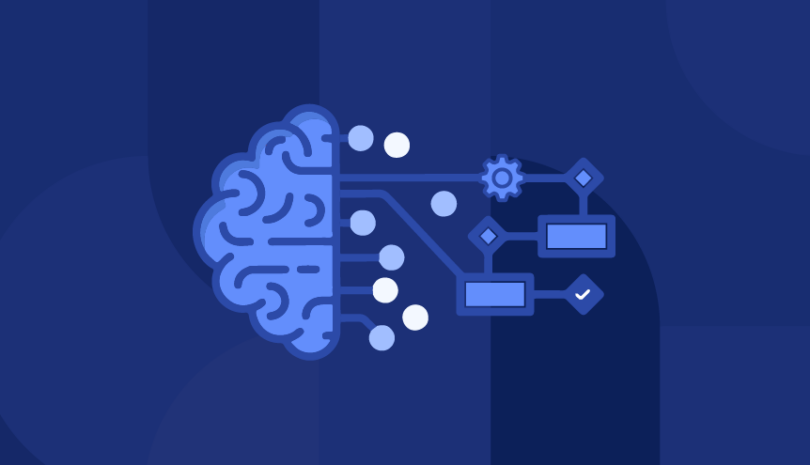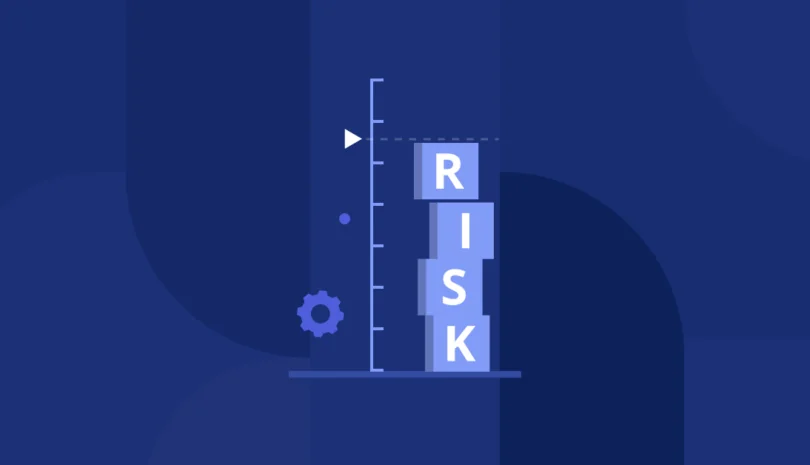The barriers to cross-border partnerships have come crashing down. In today’s global village, it’s common sense to work with the best talent and most reasonably-priced vendors, no matter where they’re located. Enterprises are increasingly partnering with offshore vendors for IT and business operations, taking advantage of benefits like lower costs, scalability, 24/7 operations thanks to time zone differences, and access to skilled workers and specialist expertise.
However, working with global third parties isn’t always smooth sailing. There are many challenges lurking among the benefits. Supply chain visibility grows blurry when your third parties lie across the ocean, and it becomes hard to verify that vendors adhere to your standards for issues like cybersecurity, compliance, and data privacy. In some areas, geopolitical tensions increase the risks of cyberattacks, and regulatory expectations vary between regions.
It’s crucial to understand, assess, and take steps to manage the cybersecurity risks that accompany the benefits of working with global third-party vendors. In this article, we’ll discuss the cybersecurity risks that are associated with international vendors, and share best practices and technology tools that can help keep those risks to a minimum.
Key Cybersecurity Risks Associated with Global Third-Party Vendors
Every third party increases your risk exposure. All it takes is for one malicious actor to spot one vulnerability in one vendor, and it could all come crashing down. Once hackers enter the digital supply chain, they can move laterally to infiltrate your critical business systems and/or breach your sensitive data.
Global third-party vendors up the ante further. Cross-border data sharing opens a Pandora’s box of compliance issues, and cybersecurity standards can vary between countries. It’s harder to monitor security practices when vendors are in different regions, and some areas are more vulnerable to cyber attacks.
Data Privacy and Compliance Issues
Complying with data privacy regulations becomes more challenging when you share data with global third-party vendors. Some regulations, like GDPR in the EU and LGPD in Brazil, forbid cross-border data sharing unless the recipient ensures similar levels of protection.
Different cultures have different expectations around consent, normal data usage, and what defines sensitive data. Assumptions about secure data handling can vary from place to place, setting the stage for misunderstandings about compliance requirements. What’s more, certain governments demand access to data stored on their soil, which could undermine compliance with other data privacy rules.
Lack of Direct Oversight
When your vendors operate in different and distant regions, it’s harder to monitor their cybersecurity standards such as security protocols, data handling practices, and incident response capabilities. This can lead to vulnerabilities such as weak access controls, unpatched systems, or inadequate encryption methods.
If your vendors are in regions with looser cybersecurity laws, they might expose you to unnecessary cyber threats. Additionally, your third-party vendors may subcontract tasks to other entities without your knowledge. This compounds the risks you face by creating a chain of exposure that is outside your visibility.
Variability in Cybersecurity Standards
When you work with global third-party vendors, you could be connecting your systems and sharing data with organizations that have inadequate cybersecurity practices. Some countries have less stringent cybersecurity regulations, and/or a culture that allocates fewer resources to defending against threats like data breaches, malware, or unauthorized access.
Cross-border vendors might not comply with international cybersecurity standards like ISO 27001, but your cybersecurity is only as strong as that of your weakest vendor. Partnering with a vendor that is less secure creates weak links in your supply chain, and allows hackers an entrance to your network.
Increased Vulnerability to Cyber Threats
Vendors in regions that are involved in conflicts or under political strain could be attractive targets for state-sponsored cyberattacks, hacktivist activities, or espionage campaigns. Sometimes working with an international organization like yours only makes them more appealing to malicious actors in their area.
There’s a risk that hostile governments could force local vendors to share data, exposing your business to surveillance, data breaches, or intellectual property theft. Geopolitical instability raises the likelihood of sanctions or trade restrictions, which can abruptly sever vendor relationships and leave you vulnerable to operational downtime and security gaps.
Best Practices for Managing Cybersecurity with Global Third-Party Vendors
Against this threatening background, it’s more important than ever to implement cybersecurity risk management best practices for your global third-party vendors.
These include:
- Carrying out rigorous vendor risk assessments before onboarding
- Writing contracts and SLAs that include clear cybersecurity requirements
- Implementing strict access controls for your systems and data
- Enforcing encryption and secure communication channels
- Conducting regular audits and compliance checks
Let’s take a closer look at what’s involved with each element.
Conducting Thorough Vendor Risk Assessments
Rigorous risk assessments are a prerequisite for managing global third-party vendor risks. You want to review a potential vendor’s security policies, incident response plans, compliance certifications, data breach history, vulnerability management, and patch frequency, so you can evaluate their overall cybersecurity posture.
It’s also important to check how often they run risk assessments. Your goal is to gain a clear view of their cybersecurity risk profile, so that you can make informed decisions about how much access to permit them, what steps to take to mitigate risks, and whether to work with them at all.
Establishing Clear Contracts and SLAs
The next step is to set firm expectations around cybersecurity measures, data handling, and regulatory compliance, so that your vendors are aligned with your cybersecurity posture. The best way to do this is through contracts and SLAs.
Make sure to include clauses that specify your cybersecurity requirements, such as adherence to NIST CSF 2.0 or ISO 27001, and define response protocols and reporting timelines. Share SLAs that detail your requirements around incident response times, vendor availability, and data privacy standards.
Implementing Access Control Measures
Good fences make good neighbors, and they also make for safe relationships with global third-party vendors. You want to control how much access your third parties have to your critical business systems and/or sensitive and proprietary data.
It’s important to enforce policies like least-privilege access, and to run user access reviews on a regular basis so that you can detect and stop privilege creep. Ensure that multi-factor authentication (MFA) is used at all times for vendor access, to limit the risks of someone hacking credentials to infiltrate your systems.
Data Encryption and Secure Communication
Verifying that every vendor adopts strong end-to-end encryption for data, both in transit and at rest, is crucial for reducing the risks of data breaches and compliance issues. You want to make sure that vendors use robust algorithms like RSA or AES, to protect data that’s stored in vendor systems or shared across international networks.
At the same time, you should adopt secure communication protocols like HTTPS, SSL/TLS, and VPNs for all your communications, including messages, files, and credentials. Enforce strong key management practices, and audit compliance with encryption standards to check that security hasn’t lapsed.
Regular Audits and Compliance Checks
Finally, keep a careful eye on global third-party vendors throughout their relationship with your organization. Regular audits and compliance checks enable you to assess whether vendors are adhering to agreed-upon security standards and regulatory requirements, identify vulnerabilities or gaps, and ensure that security controls are functioning as expected.
Your audits and security assessments should cover issues like data handling, access controls, network security, patch hygiene, and compliance with industry-specific regulations. This way, you’ll receive early alerts about any changes to vendor infrastructure, which could introduce new risks, and spot potential non-compliance issues before they escalate.
Leveraging Technology to Mitigate Risks
The aforementioned best practices should help you to keep a handle on TPRM for your global third-party vendors, but it’s not easy to implement them. Thankfully, advanced technologies bring you tools and solutions that help you to actualize this advice.
These include:
- Vendor management platforms that centralize risk management and monitoring
- AI-powered monitoring, analysis, and alerts for suspicious activities and anomalies
- Cloud-based security solutions that protect data that’s shared with offshore vendors
Here is a deeper dive into the capabilities and impact of each of these technology solutions.
Use of Vendor Management Platforms
Vendor Management Platforms, or VMPs, bring important capabilities that help you to keep tabs on global third-party vendor risks. These platforms streamline the process of evaluating, onboarding, and monitoring vendors. They integrate with other systems like SIEM tools to centralize information into a single interface, making it easy to view vendor risk profiles.
VMPs provide real-time visibility into vendor activities, security practices, compliance status, and performance metrics, helping you identify potential risks before they escalate. They can automate security assessments and risk scoring, helping you track vendor compliance with cybersecurity protocols and ensure alignment with industry regulations.
AI and Automation for Threat Detection
AI and automation bring powerful ways to mitigate vendor cybersecurity risks. AI-driven systems can analyze vast amounts of data from a range of sources, identifying patterns and anomalies that may indicate threats or regulatory non-compliance. Unlike human monitoring, AI systems never get tired and are less susceptible to error.
Additionally, machine learning (ML) algorithms continuously learn from past incidents to detect new cyberattack tactics much faster than traditional methods. Automation takes this a step further with real-time 24/7 monitoring, immediate response actions, and automatic alerts for relevant stakeholders, helping reduce incident response times.
Cloud-Based Security Solutions
Cloud-based security solutions offer a safer way to share data with offshore vendors. They usually include advanced encryption, identity and access management (IAM), and MFA, together with automated threat detection, real-time alerts, and data loss prevention (DLP) mechanisms. These ensure that only authorized users can access sensitive data, and help monitor vendor activities.
Cloud security platforms also typically comply with international security standards and regulations, which helps you meet legal and regulatory requirements when working with vendors across different jurisdictions. Because they integrate easily with existing IT infrastructure, they equip you to enforce consistent security policies across global vendor networks
Global Third Party Vendors: Solutions and Management
Working with global third-party vendors can bring enormous challenges along with many important benefits. As your supply chain spreads across the world, it exposes you to increased risks of data breaches, cyber attacks, and regulatory non-compliance. It’s not easy to manage third-party cyber risk, and it only gets harder once your vendors reside in other regions, adhere to different regulations, and have an unfamiliar security culture.
The only way to keep on top of your expanded risk landscape is to go all-in on proactive risk management. That means taking careful steps to assess risk before onboarding, writing expectations into contracts and SLAs, enforcing access controls and data encryption, and running regular audits and security assessments.
Technologies like AI, automation, and cloud security solutions are vital if you want to actualize all your good intentions. It’s never too late to evaluate and strengthen your cybersecurity frameworks, so that they’re robust enough to protect you when working with offshore vendors.
Ready to enhance your third-party risk management for global third-party vendors? Contact Panorays to learn more.
Global Third-Party Vendors and Cybersecurity FAQs
-
Global third-party vendors often handle sensitive business data and have access to critical systems. A breach at one vendor can compromise the security of the entire supply chain, leading to data loss, financial harm, legal consequences, and reputational damage. Cyber risks are higher when you work with vendors in different regions, because they might not meet the same cybersecurity standards and regulatory requirements as your organization.
-
The industries that are most affected by global vendor cybersecurity risks include finance, healthcare, retail, technology, and manufacturing. These sectors often handle highly sensitive data, making them attractive targets for cybercriminals, and are governed by the most stringent regulations, so non-compliance can have serious consequences.
-
There are many tools that help you manage cybersecurity risks associated with global third-party vendors. These include Vendor Management Platforms (VMPs) for centralized risk monitoring, Security Information and Event Management (SIEM) systems for real-time threat detection, and Governance, Risk, and Compliance (GRC) software for ensuring regulatory adherence. AI-driven threat detection and continuous monitoring tools also help identify vulnerabilities or anomalies before they escalate into serious issues.


